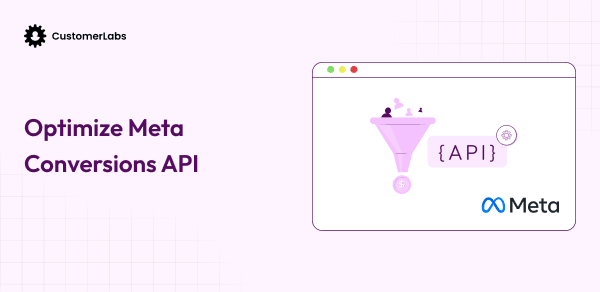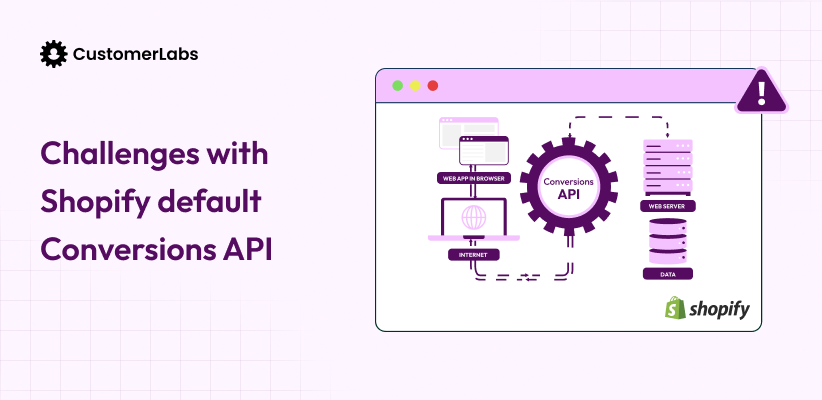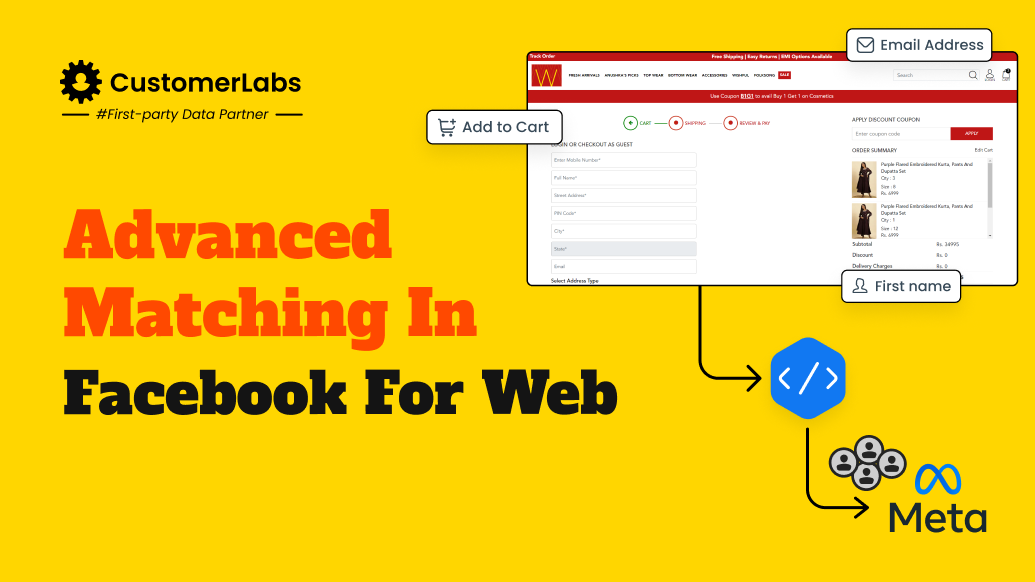According to a recent study, the most significant challenge marketers face today is the inability to understand the ad algorithms.
You set up the campaign, allocate the budget, send in data (events & audiences), set the creatives in place and hit run. Earlier it was more like purchase is true, and no purchase is false. But that’s not the case anymore.
You follow the same routine now. Sometimes you end up getting conversions (average) and sometimes you do not. Do you really know how Meta’s algorithm actually understands and learns the data that you are sending?
In this blog, you will learn how ad algorithms work—earlier and now, and how to better train the algorithms.
Let’s start with exploring the learning curve of Meta’s algorithm.
From Binary Models to Sequence Models: How Meta’s Learning Evolved
Earlier, Meta’s original models for ads and learning algorithms were Deep Learning Recommendation Models (DLRMs).
What are DLRMs, and how do they work?
DLRMs are a type of machine learning model, mainly used by companies like Meta (Facebook), Google, etc., for recommendation systems, i.e., built to handle recommendation tasks at large scale.
These models can process a combination of two features:
- Categorical features such as user ID, item ID, location, etc.
- Continuous features such as user age, time spent on page, etc.
The machine learning models embed categorical data and map them to dense vectors using embedding tables. After which, the model will combine them with continuous data and then feed everything into a deep neural network (MLPs) to predict what a user might want next.
In the old static DLRM models, a static binary classification, the learning target refers to what the model is trying to predict during training.
To make it simpler to understand what the model sees, it was more like 1 point if the user clicked on an ad or content and 0 points if they did not click.
Let’s say a user clicked, visited the product page and made a purchase for $500. The model will get trained on features like:
{
“user_age”: 25,
“product_id”: “A123”,
“ad_position”: 3,
“previous_clicks”: 12,
“purchase”: 1,
“conversion_value”: 500
}
So during the training, the model learns patterns like: Users who did X, Y, and Z tend to click or buy and generate $n in revenue.
This is how Deep learning recommendations worked, and that’s how Meta was learning and targeting.

Shift to Sequence Learning
Meta has shifted to Sequence models—where the learning happens by understanding the user journey as a time-ordered sequence of actions. With Sequence learning, Meta not just process data, it times travels and understands the user behavior in the past, present, and future.
What is Sequence Learning, and how does it work?
Sequence learning is a type of machine learning where the model learns from ordered or arranged data — not just the data itself, but also the order and timing of that data. By this model, Meta does not see the users just as a point; rather, it watches every step of the user, learns and predicts what would be the next probable action of the user.
Imagine you are tracking a user on an e-commerce website; the events might look something like this:
[page_view at 2 PM] → [view_product: Shoes at 2:02 PM] → [add_to_cart at 2:05 PM] → [purchase at 2:10 PM]
Now, these events get encoded into a vector that includes the metadata, such as time gaps, device type, product ID, etc. By this, the model watches a series of vectors and later gets fed into the sequence modeling architecture.
Once the sequence gets fed inside the model, it can be trained to perform tasks such as
- Next Event Prediction: “What is the most likely next action?”
- Sequence Classification: “Will this user buy or churn?”
- Sequence-to-Sequence Tasks: “Summarize this behavior into a profile.”
- Time Series Forecasting: “Predict demand for a product next week.”
By this, the model learns patterns like users who add to cart within 5 minutes of viewing are much more likely to purchase.
Now that you know how Meta’s learning algorithm works, let’s understand how algorithms and events go hand in hand.
Why Event Sequences Are the Key to Better Performance
You know how Meta can connect and link the data—the events that you provide. Every user action — every click, view, or add to cart — acts as a breadcrumb trail in the user’s journey, painting a larger story of their intent and behavior.
When you send events such as Pageview, view_content, add_to_cart, Purchase, purchase_high_aov, purchase_category, etc.—you’re not just transmitting raw data. You’re telling a story, and Meta’s sequence learning models are trained to read that story in the exact order it happens.
For instance, imagine two users posing different behavioral patterns on an e-commerce site. User A clicks an ad, views a product page for a few seconds, and then exits without any further action. And the only event you captured is pageview.
How does Meta see User A? A short breadcrumb trail. This user shows minimal engagement — likely just browsing without strong buying intent.
Now, there is User B, who clicks an ad, explores multiple products, spends time reading descriptions, and then purchases a product. Now the events that get captured are view_content, add_to_cart, and purchase.
How does Meta view User B? A rich, detailed trail of high-value actions. This user not only engaged deeply but also spent significantly — a clear sign of strong purchase intent.
From the above scenario, you can clearly see that it is not the single event that you send; rather, it is a pattern of events that you send to Meta that are of prime importance for it to picture the right profile to bring out the right ad performance.
You can also delve on the important parameters or event match keys that you can send to Meta for better EMQ Score.
Up next, let’s deep dive into custom events and how Meta learns them.
How Should You Think of Custom Events?
Custom events aren’t magic. But they are powerful tools that give your machine learning models — like Meta’s sequence learning engine — much more to work with than basic events ever could.
Custom events such as purchase_high_aov, signup_premium, repeat_purchase, clicked_discount_banner, etc., are user-defined signals that go beyond standard events like pageview, add_to_cart, or purchase. They help you capture more nuanced user behavior — the kind of behavior that standard events simply don’t reveal.
Meta’s sequence learning model isn’t just reading events — it’s learning from the patterns. They look after the order, frequency, timing, and context of those events. So a custom event, like purchase_high_aov, sends a signal to Meta within a specific behavioral path. It learns to recognize the intent archetype behind high spenders.
This precision allows Meta to predict earlier in the journey based on partial sequences, time gaps between events, and drop-off patterns and bring in valuable purchases.
Sequence learning and custom events together weigh users based on conversion value and conversion journey and assign higher predictive weight to paths that end in meaningful, high-value conversions.
Additionally, this also helps when creating lookalike audiences in Meta, which uses contextually weighted sequences, not just profile similarities. By embedding custom events in your tracking, you are providing Meta’s models with rich data, sharp segmentation and smart audience expansion.
With that being said, let’s look into how can you effectively send data to train the algorithm better for better conversions from your ad campaigns

How Can You Train Meta’s Algorithms Better?
Sending “data.” Not just any data. You must engineer that data (first-party data) to act as training material for Meta’s predictive brain.
The more accurate context-rich and time-ordered your data, the more accurate Meta’s predictions and the better the ad performance and conversion rates.
Don’t just track actions, teach behaviors
It starts with Tracking:
Track sequences of the actions that the user makes in order using both Pixel and Conversions API. This way your tracking would be accurate, and you won’t miss out on any data.
Don’t just track the “last or first click”; send in the entire user journey. The richer and more ordered your event stream, the faster Meta learns who your next high-value customer might be.
Next comes the data you send:
Go beyond sending standard purchase events; rather, send high-intent qualifiers: high_aov, no_discount, repeat_buyer, etc.
These nuanced custom events act as stronger training signals, helping Meta learn what kind of customer is most valuable to your business — not just who’s most likely to click. Over time, this helps Meta optimize for high-LTV (lifetime value) customers instead of short-term wins, improving both ROAS and business sustainability.
Don’t stop with conversions events; close the Loop with Post-Conversion Events:
The conversion isn’t the end. Meta’s algorithm keeps learning after the sale. Send offline conversions’ data; send back events such as qualified_lead, paid_plan_start, upsell_conversion.
Imagine that you run ads for an e-commerce brand; generally, you would feed Meta the purchase data, missing out on the high-return orders (RTO). When you just send in the blunt purchase data, Meta will keep finding users who might return the products, compromising on the conversions from your ad campaigns.
And when you are running retargeting campaigns, you might be retargeting users who viewed the product 3 times but did not purchase. Here, imagine what if the user is just a casual scroller and does have the intent of buying the product. Sending in successful purchase user data can train the algorithm to better understand the user behavior and optimize the targeting.
By doing so, you are not just attributing to the revenue; instead, you are correcting Meta’s training set. By following these changes, you can effectively train Meta effectively and increase your ROAS in no time.
To Wrap up
Meta’s algorithm has evolved. It no longer thrives on random bits of tracking data — it learns from complete, contextual, time-ordered customer stories. And the more intentional you are about feeding it clean, rich, strategically sequenced first-party data, the more profitable your campaigns become.
But here’s the truth: manually engineering this level of tracking and data orchestration is time-consuming and error-prone. That’s where First-Party Data Ops (1PD Ops) steps in.
With a 1PD Ops in place, you don’t just track—you train. You build a structured narrative of every high-value user journey, send granular signals and make sure Meta is learning from your best customers—not just the loudest clicks.
Want to see how it works in action?
Book a demo and watch how CustomerLabs 1PD Ops can help you train Meta’s algorithm smarter, faster, and more profitably.







